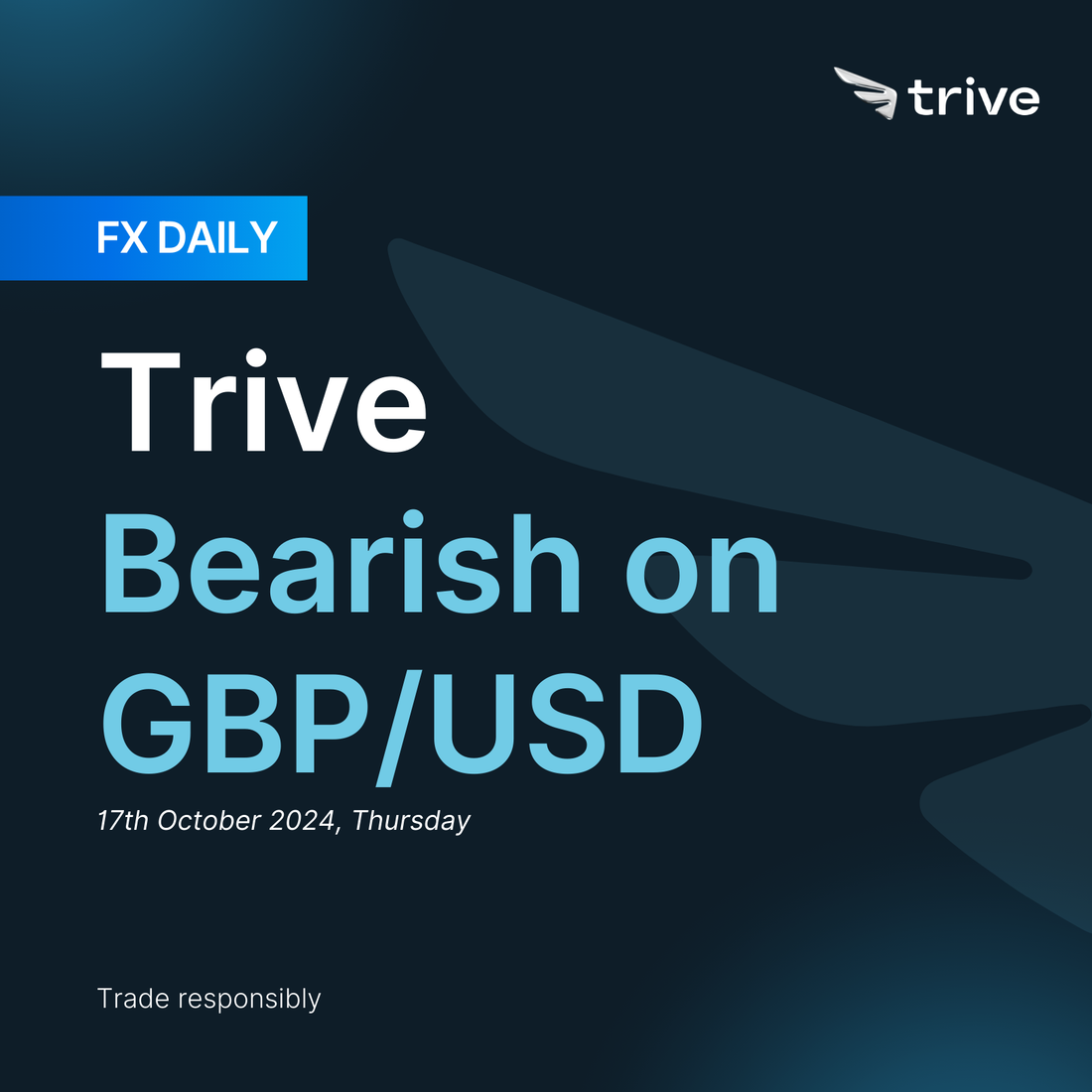FX Daily: Trive Bearish on GBP/USD

The lower-than-expected UK CPI, along with softened wage growth, signals a clear path for the BoE to cut rates in November, adding further pressure on the GBP in the near term. In contrast, the USD remains supported as markets reduce expectations for a November rate cut, driven by persistent geopolitical risks and the approaching US election.
GBP: Confirmed November cut
Barring any significant domestic issues or a more dovish turn from the Bank of England (BoE), the pound is expected to be supported long-term for several reasons. First, core inflation in the UK remains more persistent than in other G10 countries, particularly in the services sector. Second, UK growth is gaining momentum, with leading indicators and recent data confirming that this recovery is not a temporary spike but an adaptation to higher interest rates. Lastly, there is optimism that the new Labour government will implement reforms to enhance the UK's long-term growth potential. Although challenges persist, this overall optimism is providing fundamental support for the pound.
However, recent remarks by BoE Governor Andrew Bailey, hinting at potential accelerated easing due to slowing growth momentum, have weighed on the GBP. Additionally, the September CPI report showed services inflation dropping more than expected—from 5.6% to 4.9%—against a consensus of 5.2% and a BoE forecast of 5.5%. The core services inflation, which excludes volatile items, also dropped from 4.9% to 4.6%. Headline and core CPI were below expectations at 1.7% and 3.2%, respectively. This dovish data points toward rate cuts in the upcoming BoE meetings (November and December). Furthermore, recent employment data showed slowing wage growth, adding further support for potential rate cuts by the end of the year. Combined, these factors—soft inflation and wage data—reinforce Bailey’s comments, increasing the likelihood of a November rate cut and adding pressure on the GBP in the near term.
USD: Long wait to abdicate
The USD continues its rally, driven by several key factors. First, stronger-than-expected September job reports have reduced market expectations of a rate cut in November. Second, rising geopolitical tensions in the Middle East have spurred a surge in oil prices, tightening global conditions and boosting demand for the safe-haven USD. Third, Donald Trump’s improved standing in the US presidential race raises the risk of another global trade war, supporting the USD. Lastly, the US CPI for September came in above expectations, with headline inflation at 0.2% m/m and 2.4% y/y, and core inflation at 0.3% m/m and 3.3% y/y. This stronger CPI has eased the market’s expectations of a 50bps cut, but it doesn’t change the Fed’s outlook of a 25bps cut in November and December, as not all inflation gains will translate directly into PCE, the Fed’s preferred inflation measure.
Moreover, recent Fed speakers have offered mixed views on the USD outlook. FOMC voting members John Williams, Austan Goolsbee (alternate), and Thomas Barkin signaled that rates could move lower in November. Williams is seen as neutral, Goolsbee dovish, and Barkin hawkish. Meanwhile, Raphael Bostic, a neutral member, indicated he is open to pausing a November rate cut due to the 50bps cut in September. While these differing opinions should be watched closely, they are unlikely to shift the current policy trajectory significantly. Overall, these developments are expected to continue supporting the USD in the short term. However, for the USD to strengthen further, additional positive US economic data or a worsening global risk sentiment would be needed.
Looking ahead, the focus will be on this week’s key US economic data, particularly September retail sales, which could shed light on consumer spending. Geopolitical developments in the Middle East will also be closely monitored for their impact on global financial conditions, along with the US election race, which may shape risk sentiment globally. Further hawkish remarks from Fed officials could reinforce the USD’s status as a safe-haven currency in this volatile environment.

Disclaimer
This material is provided for informational purposes only and does not constitute financial, investment, or other advice. The opinions expressed in this material are those of the author and do not necessarily reflect the views of Trive International. No opinion contained in this material constitutes a recommendation by Trive International or its author regarding any particular investment, transaction, or investment strategy. This material should not be relied upon in making any investment decision.
The information provided does not consider the individual investment objectives, financial situation, or needs of any specific investor. Investors should seek independent financial advice tailored to their individual circumstances before making any investment decisions. Trive International shall not be liable for any loss, damage, or injury arising directly or indirectly from the use of this information or from any action or decision taken as a result of using this material.
Trive International may or may not have a financial interest in the companies or securities mentioned. The value of investments may fluctuate, and investors may not get back the amount they originally invested. Past performance is not indicative of future results.
For more information about Trive International, please visit http://trive.com/int
Additional Information
Investing involves risk, including the potential loss of principal. Diversification and asset allocation strategies do not ensure a profit or guarantee against loss. The content in this material is subject to change without notice and may become outdated or inaccurate over time. Trive International does not undertake any obligation to update the information in this material.
By accessing this material, you acknowledge and agree to the terms of this disclaimer. If you do not agree with these terms, please refrain from using this information.
暂无评论
主页
特里夫
TriveHub





0条评论